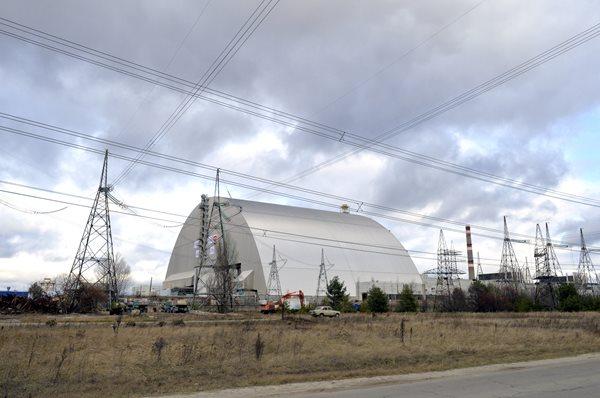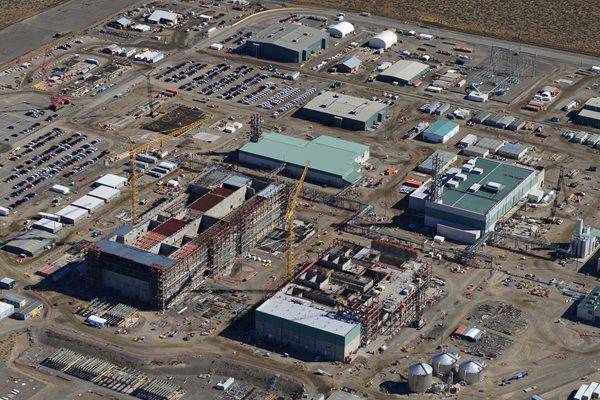Cleaning Up After the Cold War
By Fred deSousa
Watch for more content celebrating our 120 years, and follow #Bechtel120 on social media to learn more.
Bechtel has a long history of making the world a safer and cleaner place by helping clean up after the Cold War. We have nearly 40 years of experience in environmental cleanup and management at more than 500 contaminated sites across the world.
One of Bechtel’s historically significant contributions is our service to the national program to clean up waste left over from the production of U.S. nuclear weapons. Our contributions include removing and remediating contaminated soil and groundwater, demolishing decommissioned nuclear reactors and processing facilities, and treating tens of millions of gallons of liquid radioactive waste stored in underground tanks.
Since 1979, we have managed remediation programs for the U.S. Department of Energy in Washington state, Idaho, Nevada, New Mexico, Kentucky, Tennessee, South Carolina, for the Department of Defense at military bases, and the Environmental Protection Agency at Superfund sites in both industrial and residential areas. We managed cleanup and recovery after the Three Mile Island nuclear plant accident and have also managed multisite environmental programs in the U.S. and around the world for commercial customers such as Chevron, GE, Southern Pacific, and Reynolds Metals.
At the Chernobyl nuclear power plant in the Ukraine, Bechtel designed and is now managing construction contractors installing a massive, weatherproof arch to cover the damaged nuclear reactor. The arch will keep wind, water, and snow out while keeping radioactive particles in, and is the largest movable structure ever built – tall enough to enclose the Statue of Liberty. It was an unprecedented partnership with the Ukraine, design and construction providers, and donor nations who financed the cleanup through the European Bank for Reconstruction and Development.
In 2006 and 2007, teams led by Bechtel and the University of California began managing and operating Los Alamos National Laboratory in New Mexico and Lawrence Livermore National Laboratory in California. The two labs are the premier U.S. institutions for national defense and scientific research, monitoring the nation’s nuclear stockpile, and delivering breakthrough research in medicine, energy, physics, astronomy, and other areas of science.
Our wide-ranging capabilities and extensive experience continue to play a crucial part in the management of complex, multisite environmental programs for government and commercial customers.
Learn more
Hanford Waste Treatment and Immobilization Plant, Hanford, Washington
Bechtel is designing and building the world’s largest radioactive-waste treatment plant to process and stabilize 56 million gallons (212 million liters) of radioactive and chemical waste. Upon completion, the waste will no longer pose a threat to the Columbia River, surrounding communities, or residents downstream in the U.S. Pacific Northwest.
Savannah River Site Liquid Waste, Aiken County, South Carolina
At the Savannah River Remediation site, we are responsible for removing high-level radioactive liquid waste from existing underground tanks, treating that waste in complex facilities designed to make it safe for long-term disposal, constructing the high-tech salt disposal units, and the final closure of the emptied, million-gallon waste tanks
Advanced Mixed Waste Treatment Plant, Idaho
Bechtel’s team treated and shipped more radioactive waste than any other site in the DOE complex—and did it nearly three years ahead of schedule. In 2010, our project team reduced waste volume by nearly 2,700 cubic yards, nearly 9,900 55-gallon drums, eliminating 360 shipments and saving more than 200,000 gallons of fuel.
Sellafield Pile Fuel Cladding Silo Retrieval, Cumbria, England
A Bechtel-led team will retrieve, handle, and package legacy radioactive waste from storage silos at the U.K.'s Sellafield nuclear reprocessing site. Sellafield is part of a UK Nuclear Decommissioning Authority program to decommission nuclear storage facilities dating to the early 1950s.
Hanford Corridor River Cleanup, United States
As a member of the DOE’s Washington Closure Hanford (WCH) team, we helped remove more than two million tons of chromium contaminated soil from areas near the Columbia River. Our WCH team working at the Hanford, Washington, site demolished 323 buildings, cleaned up 571 hazardous waste sites, disposed of 11.4 million tons of contaminated material, and placed two nuclear reactors in interim safe storage.



